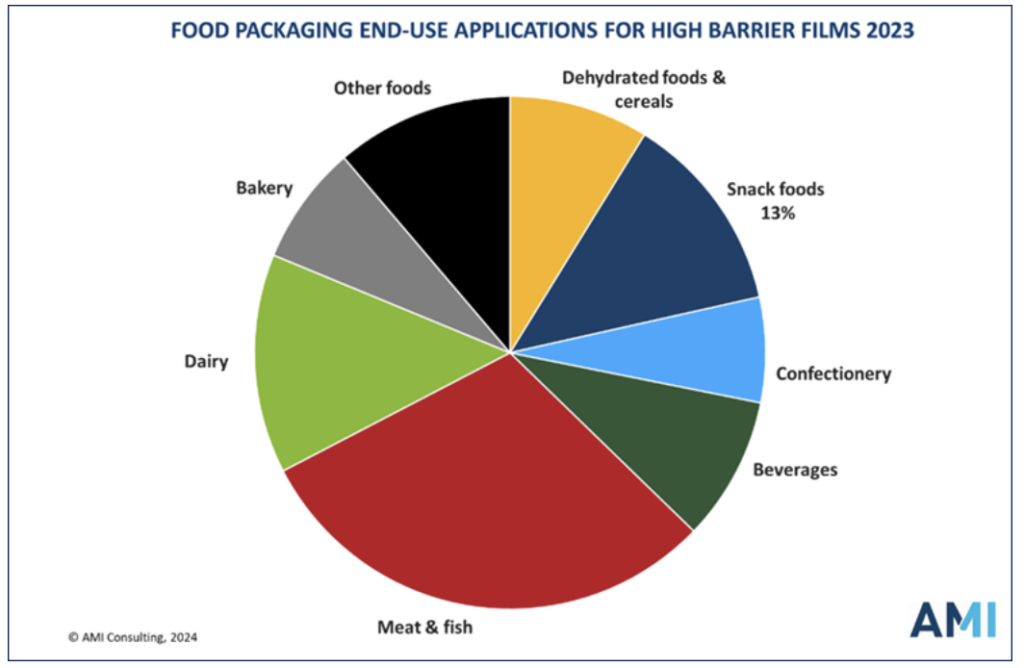
While food packaging is largely recognized as a long-term and resilient industry during economic downturns, its enduring growth is surpassed by demand for high-barrier films in food packaging, says a new report by UK-based AMI. “High Barrier Films for Food Packaging – The Global Market 2024“ forecasts that worldwide demand will rise 4.8% a year to 2028.
The report divides the global market into eight separate regions, differentiating between the four distinct markets of Asia, which show differing speed of growth, direction of growth and use of substrates and barrier materials with the Indian Sub-Continent enjoying the highest rate of growth contrasted with North East Asia, where demand for high-barrier films is stagnant.
Growth drivers are varied and complex. Sustainability is a key factor in the rise in demand for high-barrier films as these films serve to prevent food waste, reduce packaging and replace mixed-material alufoil laminates. However, in developed regions, poor consumer perception of plastics could hinder growth, as brand owners and converters seek alternatives through the use of paper, with many development projects and trials underway. Across Asia, more cost-effective mixed-material laminates are expected to remain prevalent.

The report covers all transparent and non-transparent barrier materials which are typically used to replace alufoil. It explores the significant future potential of emerging barrier and substrate materials, some of which accelerated in uptake during raw-material shortages.
Chilled products such as meat/fish and dairy account for the majority of high-barrier films applications in 2023, and while snack foods will be the fastest growing application, meat/fish will provide the largest volume growth as retailers seek to further protect this high-value segment.
Advances in technologies such as MDO-PE and BOPE as well as improved coating solutions will enable further growth in the use of high-barrier films for standup and retort pouches, which are increasingly popular for their convenience, while allowing for increased regulation for sustainability and recycling purposes.

